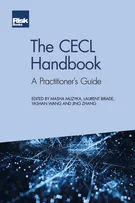Solvency II and Mutual Insurance Companies
Markku Miettinen, Annina Pietinalho and Lauri Saraste
Introduction: Starting the Solvency II Journey
Solvency II: The journey so far
Internal Models and Solvency II
Review of the Capital Adequacy Framework in Singapore
Insurance Liabilities Under IFRS 4 Phase II and Solvency II: Almost the Same Thing?
Solvency II and Mutual Insurance Companies
The Journey Towards an Approved Internal Model
The Road to Solvency II for a Life Insurance Company
Managing Model Risk
Solvency II and Reinsurance
ORSA: A Forward-looking Approach to Risk and Capital Management
Risk Governance: A Framework to Support Better Decision-making and a Journey Towards Continuous Improvement
Operational Risk and Solvency II: A Practitioner Perspective
Reporting Processes
Reporting Challenges under Solvency II: The Allianz Experience
The Audit of Solvency II Information
The Holistic Balance Sheet: A Different European Approach for Pension Funds?
Capital for Operational Risk: Some Fundamental Flaws
Reputational Risk: Success is Trust-dependent
The purpose of this chapter is to discuss the importance and challenges of Solvency II for mutual insurance companies. Mutual insurers form a significant part of the European insurance sector. Mutual and mutual-type insurers have about quarter of the market share, and there are a total of 3,300 mutual insurers out of the 6,000 insurers in Europe.11AMICE, 2012, “Facts & Figures – Mutual and Cooperative Insurance in Europe”, Brussels. The main difference between a limited company and a mutual company is that mutual insurer’s policyholders have a dual role in relation to the insurance company: they are both the customers and owners of the company. Policyholders of mutual insurers or their representatives usually have a key role in decisionmaking, and usually the company’s surplus capital also belongs to them upon liquidation. These basic characteristics of mutual insurers pose challenges to capital management within Solvency II because it is designed more for limited liability companies and their groups.
We will discuss what Solvency II’s risk-based capital requirements mean, and which kind of capital management measures are available for mutual insurers to manage their Solvency II
Copyright Infopro Digital Limited. All rights reserved.
You may share this content using our article tools. Printing this content is for the sole use of the Authorised User (named subscriber), as outlined in our terms and conditions - https://www.infopro-insight.com/terms-conditions/insight-subscriptions/
If you would like to purchase additional rights please email info@risk.net
Copyright Infopro Digital Limited. All rights reserved.
You may share this content using our article tools. Copying this content is for the sole use of the Authorised User (named subscriber), as outlined in our terms and conditions - https://www.infopro-insight.com/terms-conditions/insight-subscriptions/
If you would like to purchase additional rights please email info@risk.net





